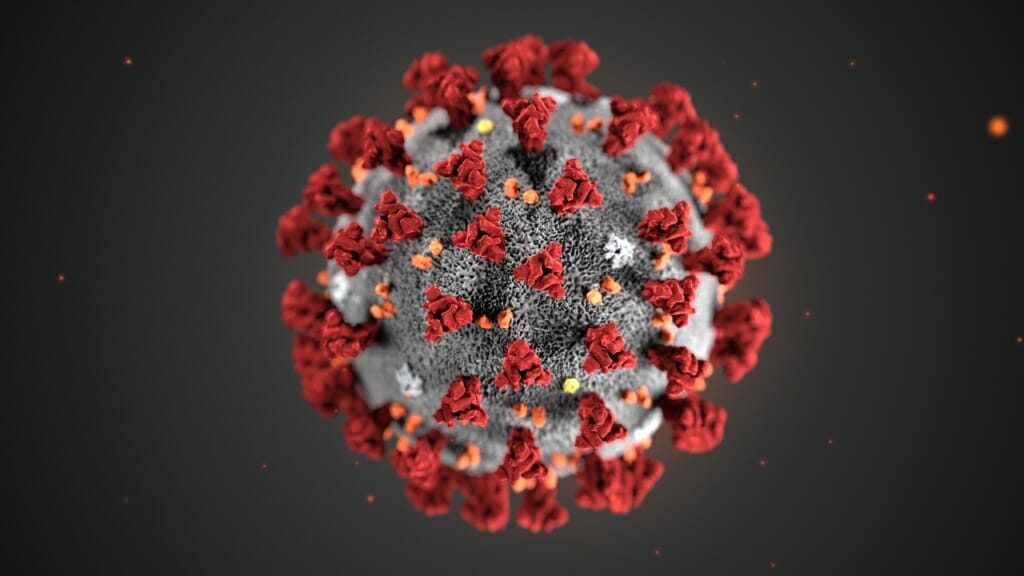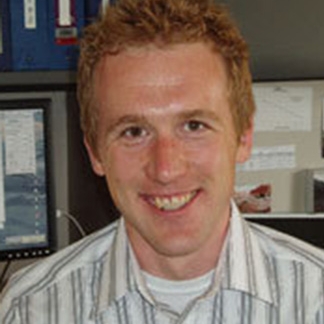UW–Madison researchers lead efforts to understand, thwart new coronavirus

The 2019 Novel Coronavirus (2019-nCoV), portrayed in an illustration created at the Centers for Disease Control and Prevention. Alissa Eckert, MS; Dan Higgins, MAM
Back in 2016, when Zika virus first began to cause infections in the Americas, University of Wisconsin–Madison researchers pulled together a coalition of scientists to study the virus and openly share their data for others.
Two weeks ago, those researchers — David O’Connor, professor at the UW School of Medicine and Public Health, and Thomas Friedrich, professor in the UW School of Veterinary Medicine — used the 2016 playbook to start planning efforts to study the novel coronavirus that first emerged in Wuhan, China, in late December 2019.
The virus, which causes flu-like symptoms and respiratory illness, has sickened more than 43,000 people in China and across several nations, according to health officials. At least 1,018 people have died.
Within the next few weeks, Friedrich, O’Connor, and their interdisciplinary partners hope to begin studies to better understand the novel coronavirus, 2019-nCoV.
“We are working together to develop a plan to build out nonhuman primate models to test medical countermeasures such as vaccines and therapeutics,” says O’Connor. “We want to make sure we are recapitulating the kind of clinical signs (of virus infection) that happen in people.”
The researchers are interested in understanding how much of the virus makes its way into the body and in bodily fluids; where in the lungs the virus infects; and in creating opportunities to test new vaccines and antivirals. They also hope to look at how the immune system responds and whether there are indicators that can help clinicians distinguish who might be at risk for developing severe disease.
At the Influenza Research Institute (IRI) in Madison, Professor of Pathobiological Sciences Yoshihiro Kawaoka is also preparing to study 2019-nCoV.
Among the research questions he hopes to address is the efficiency with which the natural virus transmits among animal models for disease. The novel coronavirus is capable of transmitting from person to person, but it most likely originated in bats. However, as with other coronaviruses known to cause significant illness in humans, such as SARS-CoV and MERS-CoV, the virus likely passed through another animal before becoming infectious in humans. Researchers have not identified the animal or animals involved.
With SARS, the virus passed to humans through contact with civet cats, and with MERS, through dromedary camels.
Kawaoka is also interested in studying how the virus causes illness and what cells the virus is capable of infecting. The results of the work could be used to help develop treatments and vaccines to protect people against infection.
The work at IRI will be conducted in a Biosafety Level 3 Agriculture (BSL-3 Ag) laboratory, which is just below Biosafety Level 4. The Centers for Disease Control and Prevention guidelines call for research using the 2019-nCov virus to be conducted in a BSL-3 laboratory since important aspects of how the virus causes disease and transmits are not well understood.
“We are using SARS as a biosafety and biosecurity model for this coronavirus because we don’t know enough about the virus yet,” says Rebecca Moritz, Responsible Official and the Institutional Contact for Dual Use Research at UW–Madison. The SARS coronavirus caused an outbreak in more than two dozen countries in 2003, infecting more than 8,000 people and killing 774.
“My lab is interested in why things like this happen, why do viruses emerge from somewhere and begin causing diseases in humans? What are the evolutionary pathways they need to take hold, and how do they adapt to our immune responses?
“If we can understand that, hopefully we can erect more barriers to prevent this sort of thing from happening in the future.”
Thomas Friedrich
The university has worked proactively with Public Health Madison and Dane County, the Wisconsin Department of Health Services, the State Lab of Hygiene, infectious disease specialists and University Health Services to prepare to conduct the research.
“We are requiring researchers to monitor their health and to take their temperatures twice per day,” says Moritz. Fever is one symptom of 2019-nCoV illness. “If they are not feeling well, our exposure control plans in place involve infectious disease and public health authorities. We would quarantine and test them for the virus.”
With the studies planned, UW–Madison researchers are at the leading edge of efforts to understand an emerging human illness. Kawaoka stresses that basic research studies are necessary to combat pathogens that make animals and people sick. O’Connor, Friedrich and their collaborators plan to once again share their data publicly so that other researchers may use it to advance the science, and hopefully lead to efforts to improve and protect human health.
Says Friedrich: “My lab is interested in why things like this happen, why do viruses emerge from somewhere and begin causing diseases in humans? What are the evolutionary pathways they need to take hold, and how do they adapt to our immune responses? If we can understand that, hopefully we can erect more barriers to prevent this sort of thing from happening in the future.”
UW–Madison University Health Services answers to frequently asked questions
Wisconsin Department of Health Services information about 2019-nCoV
Tags: animal research, covid-19, health, research, veterinary medicine, virology







